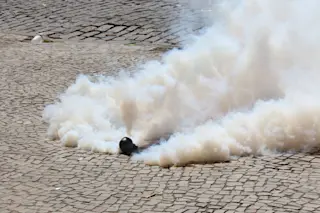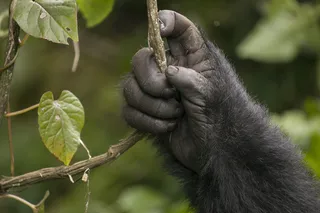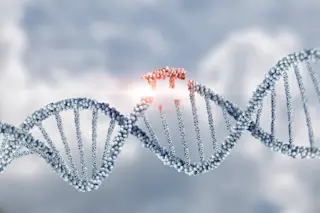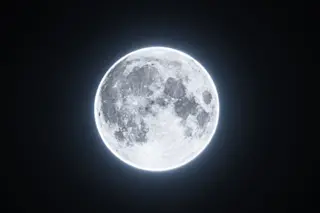Key Takeaways on Tear Gas
Tear gas is a chemical weapon also known as “demonstration control agents” (DCAs). It's designed to disperse large crowds, typically in outdoor settings. Tear gas contains lachrymatory agents, including CS (2-chlorobenzalmalononitrile), CN (chloroacetophenone), and CR (dibenzoxazepine).
DCAs work by activating a person’s nociceptive nerve fibers. Immediately, a person will feel a burning and itching in their eyes, mouth, and nose. Their skin will itch, and their lungs may feel as though they are burning.
Exposure to DCAs in an enclosed space can be fatal. And although most people survive DCA exposure, studies are finding long-term effects such as disruptions to a woman’s menstrual cycle, pulmonary complications in asthmatics, and ongoing ocular issues.
Tear gas seems to appear in the news globally. In one news story, police used it on protesters in Georgia. In another headline, Federal agents used it during a raid in California. Elsewhere, there are reports of tear gas used in France, India, and Kenya.
What exactly is tear gas? And why do authorities use it so often?
Researchers who study the use of tear gas can describe what it is and how it is made. However, there are few records regarding how often tear gas is used and in what concentration. Some scientists say that’s a problem that needs to be addressed.
What Is Tear Gas?
The origins of tear gas aren’t firmly established.
“There are a few different theories, but the dominant ones were that the French police were sort of playing around with the ways they could get protestors out from around barricades because barricades were a common tactic in the French resistance,” says Anna Feigenbaum, author of Tear Gas: From the Battlefields of World War I to the Streets of Today, and a professor of media and digital storytelling at the University of Glasgow.
There are different types of tear gases that have been used against both civilians and soldiers, starting in World War I. The French Army first used a tear gas that was irritating but not fatal. In response, the German Army developed deadly chlorine and mustard gases. An estimated 91,000 people died in gas attacks during the war.
The tear gases now in use are termed “demonstration control agents” (DCAs) because they are designed to disperse large crowds, typically in outdoor settings. They contain lachrymatory agents, including CS (2-chlorobenzalmalononitrile), CN (chloroacetophenone), and CR (dibenzoxazepine).
Read More: There's a Growing Number of Lung Cancer Cases From People Who’ve Never Smoked
How Tear Gas Works
DCAs work by activating a person’s nociceptive nerve fibers. Immediately, a person will feel a burning and itching in their eyes, mouth, and nose. Their skin will itch, and their lungs may feel as though they are burning.
Their eyes may tear, or their vision could blur. They might drool and have difficulty swallowing, or they might cough and feel as though they are choking. DCAs can also cause rashes, nausea, and vomiting.
With DCAs, location matters.
“If you’re close to it, or you’re in a trapped or enclosed location, or you have preexisting conditions, then the effects will be much higher,” Feigenbaum says. “One of the things we’re continuing to see is the use of it in enclosed spaces. It’s used in detention centers, prisons, and even children’s facilities.”
Exposure to DCAs in an enclosed space can be fatal. And although most people survive DCA exposure, studies are finding long-term effects such as disruptions to a woman’s menstrual cycle, pulmonary complications in asthmatics, and ongoing ocular issues.
The Problem with Tear Gas
Researchers have said accountability is a major issue with tear gas. Authorities don’t have to record when they use it or in what capacity, so there is no type of regulation or oversight.
DCAs can be dispersed from a launcher more than 300 feet away or a grenade as far as 150 feet away. In these instances, it can be difficult to determine which soldier or law enforcement officer dispersed the toxin.
“Tear gas is very difficult to trace back to who threw the grenade or the canister. There is very little accountability for its use,” Feigenbaum says.
And once it is used, Feigenbaum says there is no way to know the concentration of the toxin. “Unless you took samples — while you’re in the protest and being tear gassed — you can’t collect the dust,” she says.
Such unknowns have prompted scientists to call for a reevaluation of DCA safety.
Read More: Tear Gassing Protesters Could Increase Their Risk for COVID-19
Article Sources
Our writers at Discovermagazine.com use peer-reviewed studies and high-quality sources for our articles, and our editors review for scientific accuracy and editorial standards. Review the sources used below for this article:
Eugene J. Olajos, M.D., Woodhall Stopford. Riot Control Agents: Issues in Toxicology, Safety & Health
Journal of Anesthesia History. The introduction of gas warfare and its medical response in world war one
Anna Feigenbaum. Tear Gas: From the Battlefields of World War I to the Streets of Today
Survey of Ophthalmology. Effects of tear gases on the eye
Inhalation Toxicology. Reevaluating tear gas toxicity and safety















